Featured Comment:
“Made this for my wife tonight, she loved it 10/10”
– @Panpanpancakecake (from YouTube)
What is Okayu?
Let’s delve into the world of Okayu (お粥), a cherished Japanese dish. It’s prepared by gently boiling rice or various grains like barley, millet, and an assortment of beans and potatoes in a substantial volume of water until they reach a soft, comforting consistency. The most common form of Okayu, often referred to as Japanese rice porridge, is primarily made with rice.
Okayu’s unique characteristic is its ample water content, which results in a soft texture and a soothing sensation. This, combined with its nurturing warmth, has cemented Okayu’s status as a universal comfort food in Japan. It is a trusted remedy for those times when you’re not feeling 100% and is appreciated across generations.
If you’re seeking a dish that provides both nourishment and comfort, Okayu might just be the perfect choice for you.
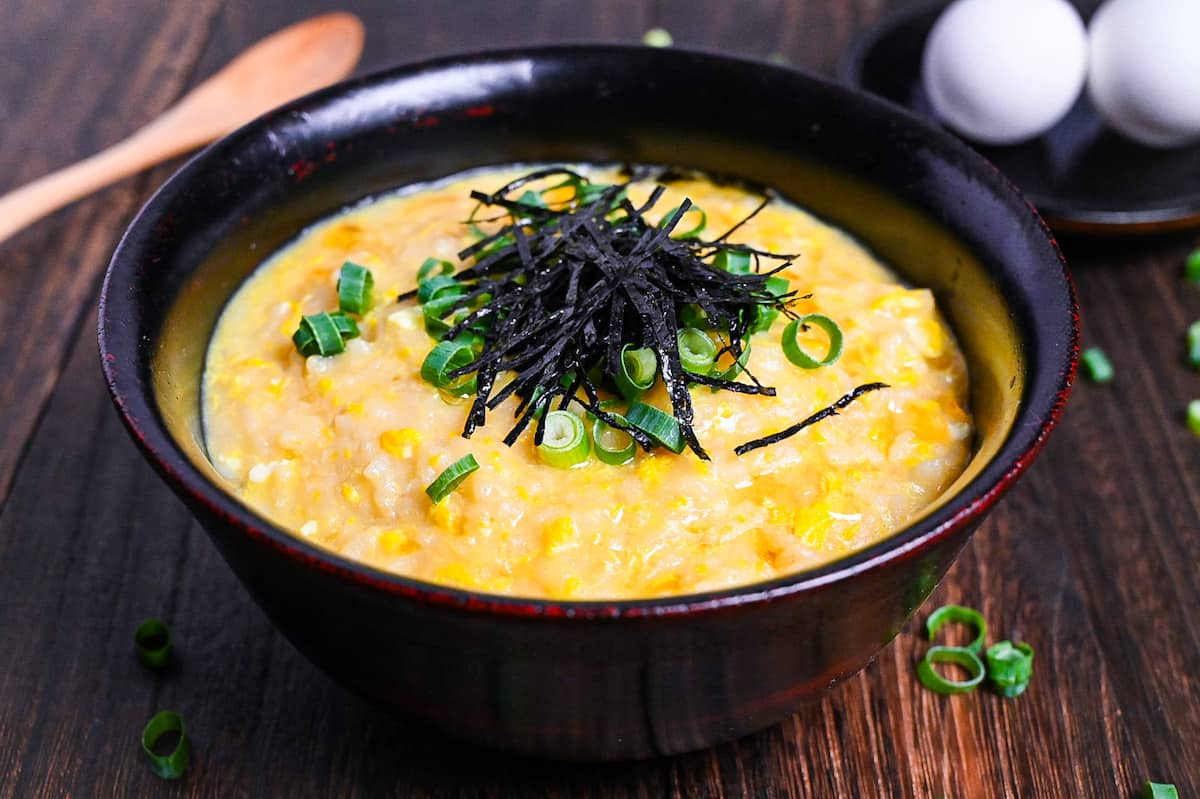
3 Ways to Make
I bet you didn’t know there are not just one or two, but three ways to cook okay. First, let me introduce you to “taki-kayu” and “ire-kayu” – two unique styles of making okayu.
Taki-kayu (炊き粥) is the method of making rice porridge from scratch with raw rice grains. The word “taki” comes from the verb “taku” which means “to cook grains” and is most commonly refers to the cooking of rice. The rice is washed, soaked and cooked in a higher volume of water than regular rice. This method of cooking okayu results in firmer grains in a thin liquid.
On the other hand, “ire-kayu” (入れ粥) is made by adding pre-cooked rice to liquid. The Japanese word “ire” (入れ) means to put something in, in this case, putting the rice in the liquid. The rice becomes extra soft since it’s essentially cooked twice, and the starch from the rice creates a thicker and stickier texture.
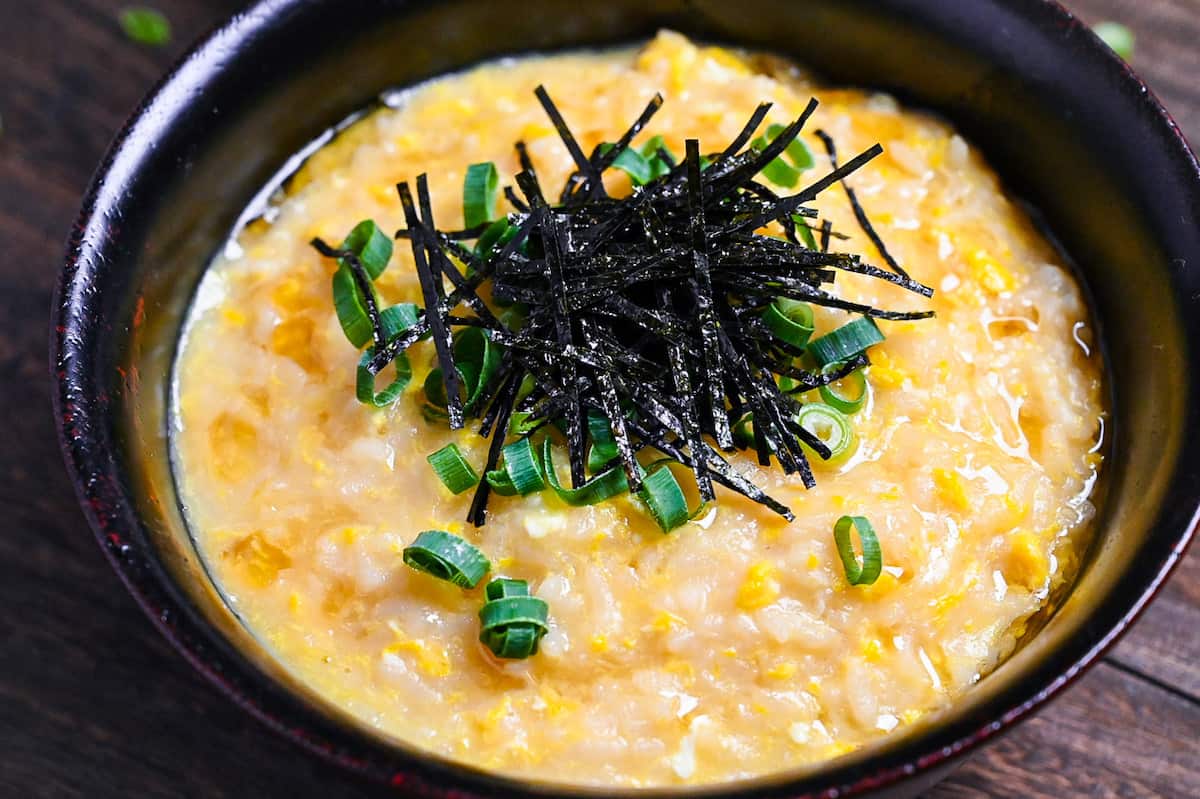
The third method is very similar to ire-kayu, however it contains one extra step, washing the cooked rice before adding it to the liquid. When you add the rice unwashed, the broth becomes thick and sticky, but some people prefer a thinner and lighter broth, so they wash the cooked rice first and then add it to the liquid. Strictly speaking, when the cooked rice is washed and then added, it is called “zosui“, not okayu.
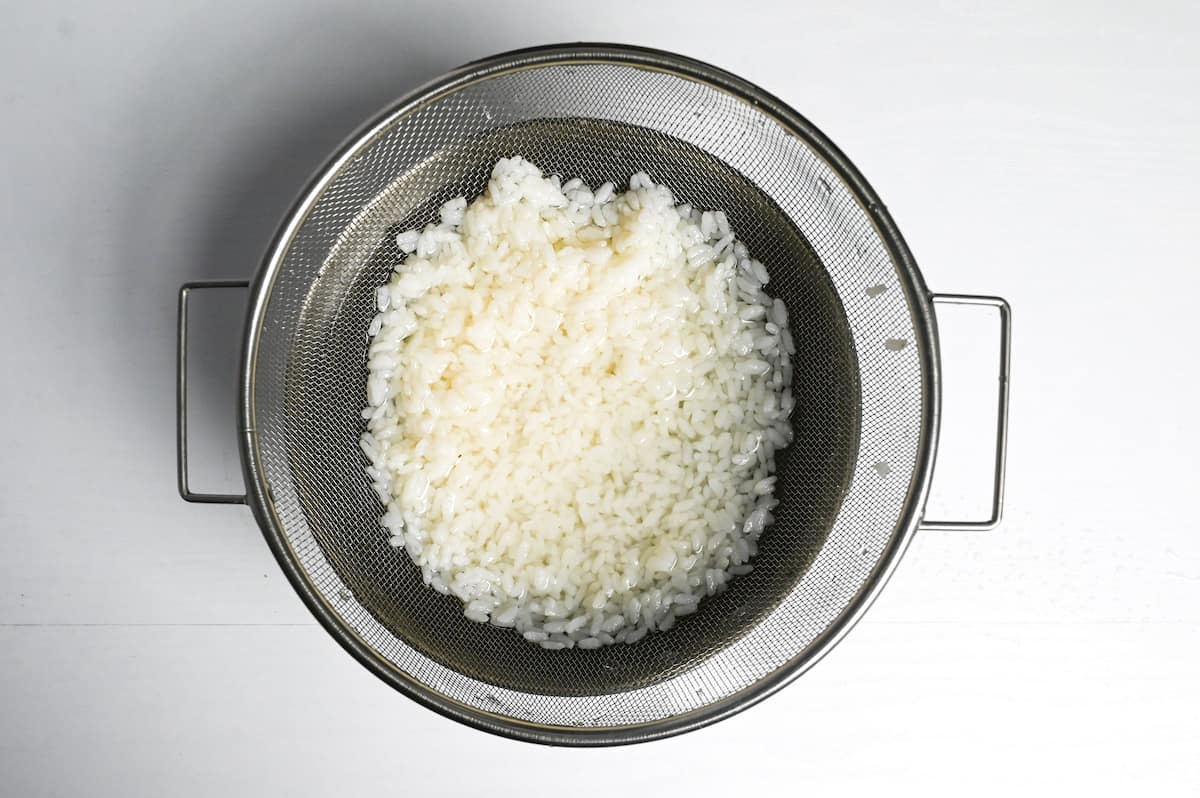
Zosui also tends to be more complex with added flavours, meat and vegetables, this makes it a dish to savour on its own or as a way to enjoy leftover broth from hotpot dishes. If you’re interested, I have more information about zosui on my Chicken Zosui recipe. On the other hand, okayu is usually plain and most commonly served to people who are sick or to people who require food with a softer texture such as babies and the elderly. It can eaten on its own, with minimal toppings, or served in the same way as regular rice with a main dish and side dishes such as miso soup and pickles.
In the end, the texture of okayu comes down to the cooking method, and everyone has their own personal preference. Most Japanese households opt for “ire-kayu” since it’s easier to make. In fact, the recipe I’m sharing here is also for an “ire-kayu” style porridge.
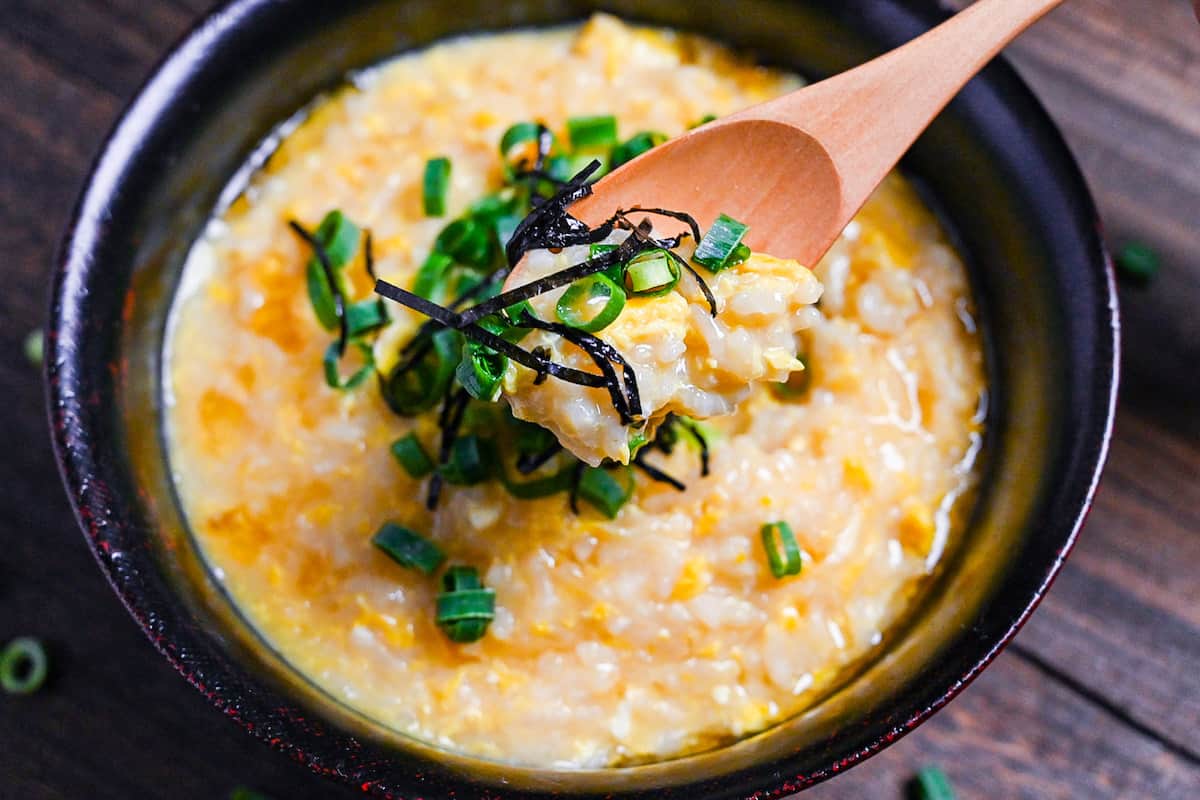
Ingredients & Substitution Ideas
- Cooked short-grain Japanese rice – Cooked to a firm and slightly sticky consistency. I recommend using a rice cooker, but if you don’t have one you can also read my article “How to Cook Japanese Rice in a Pot“.
- Eggs – M, L to XL size recommended.
- Dashi stock – Awase dashi containing dried bonito flakes is recommended. If you do not make homemade dashi, you can use dashi packets or dashi granules. For a more traditional okayu you can also just use water.
- Sake – Adds umami and distinctive sweetness to the soup. If you can’t get it, it’s okay to omit.
- Mirin – Adds depth and sweetness to the soup. If you want to know my recommended brands for mirin, check out my “20 Most Useful Condiments and Seasonings for Japanese Cooking” post.
- Light soy sauce – You can substitute for dark soy sauce, but in that case you will need to increase the amount just a little bit (because the usuuchi soy sauce is higher in salt) and your soup color will be darker.
- Garnish: Chopped green onion. toasted sesame oil, and kiza mi nori.
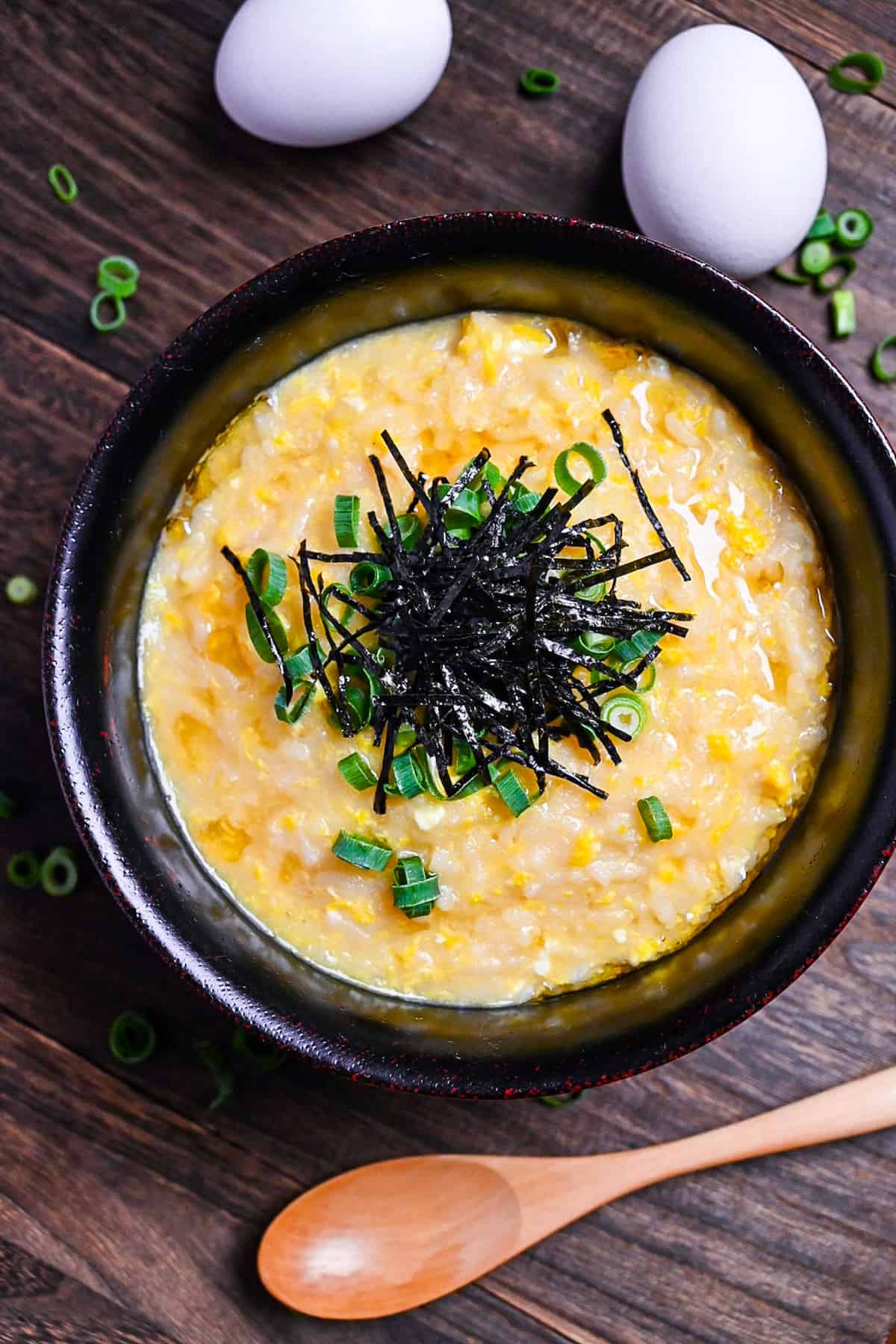
Visual Walkthrough & Tips
Here are my step-by-step instructions for how to make Egg Okayu at home. For ingredient quantities and simplified instructions, scroll down for the Printable Recipe Card below.
If you prefer to watch the process in action, check out my YouTube video of this recipe for a complete visual walkthrough!
Start by preparing the dashi. I opt for homemade awase dashi made with dried kelp and bonito flakes, but you could make a vegetarian/vegan kelp and shiitake mushroom stock if you prefer. Alternatively, you can use instant dashi or dashi bags.
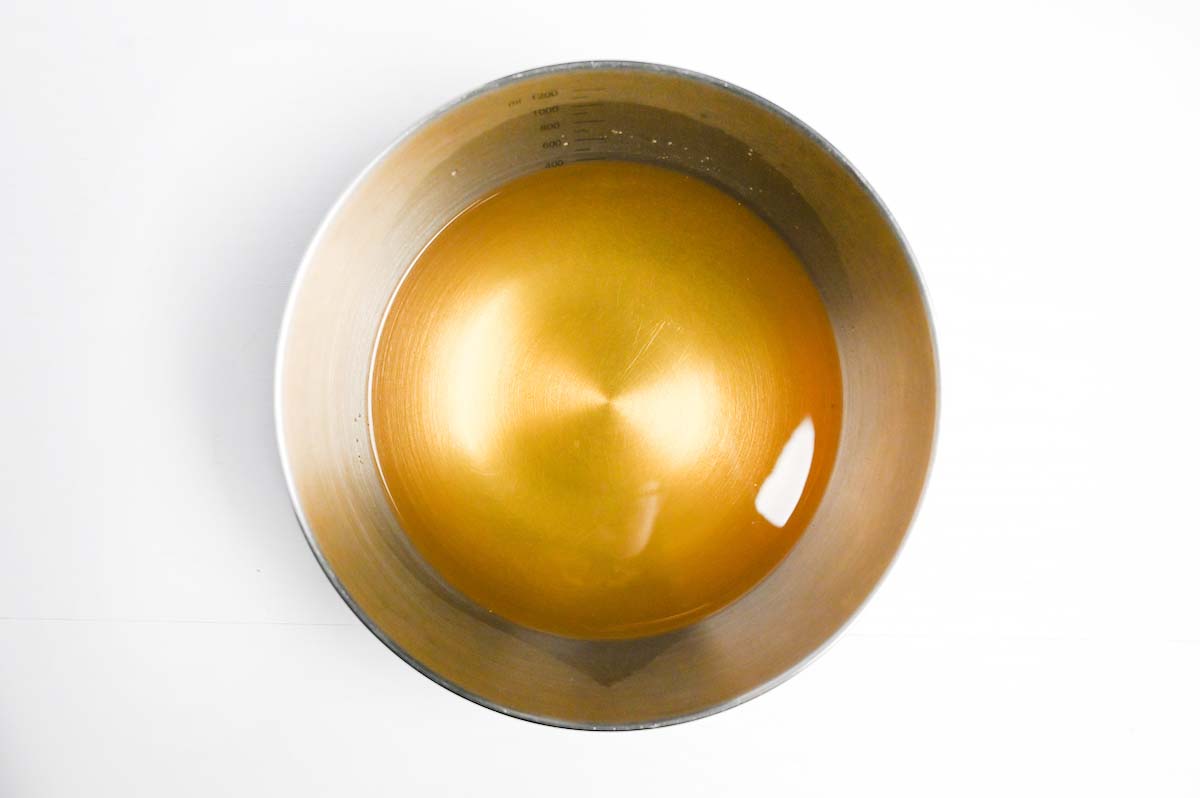
Transfer the dashi to a pot and bring it to a boil over medium heat.
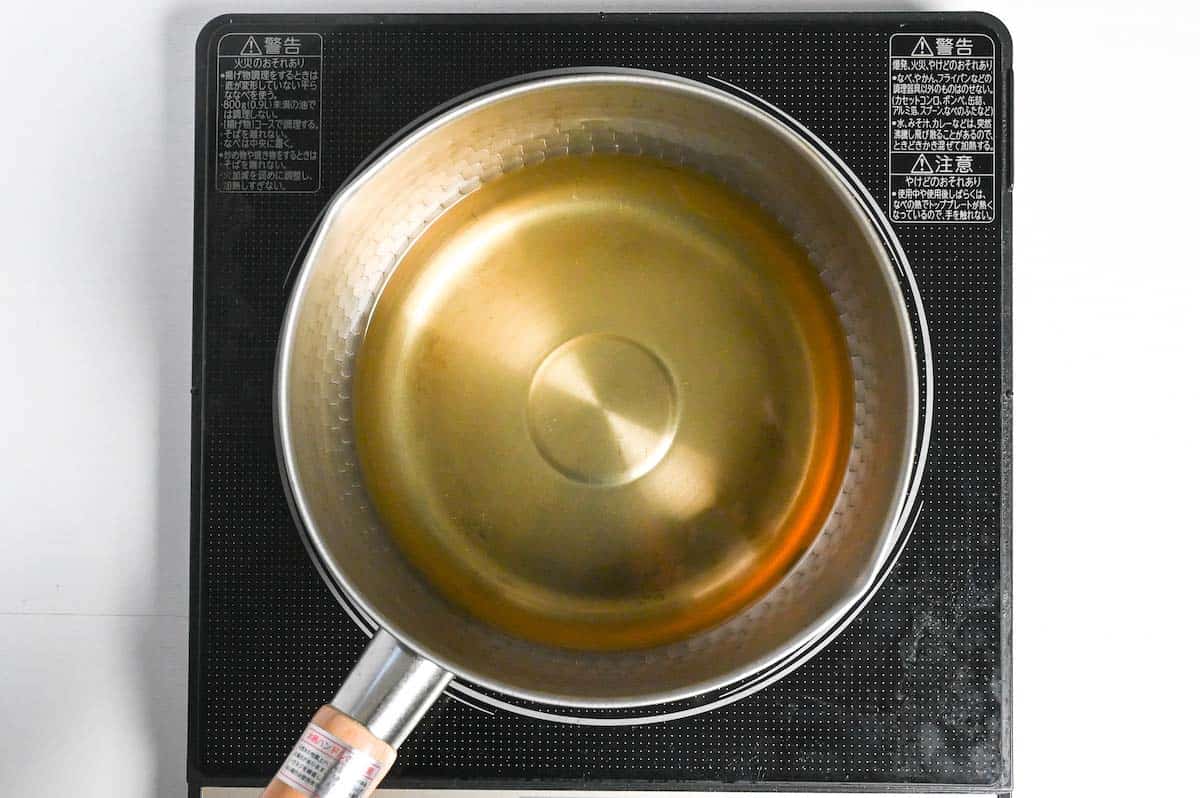
While the dashi is heating, whisk the egg in a bowl until the yolk and whites are combined.
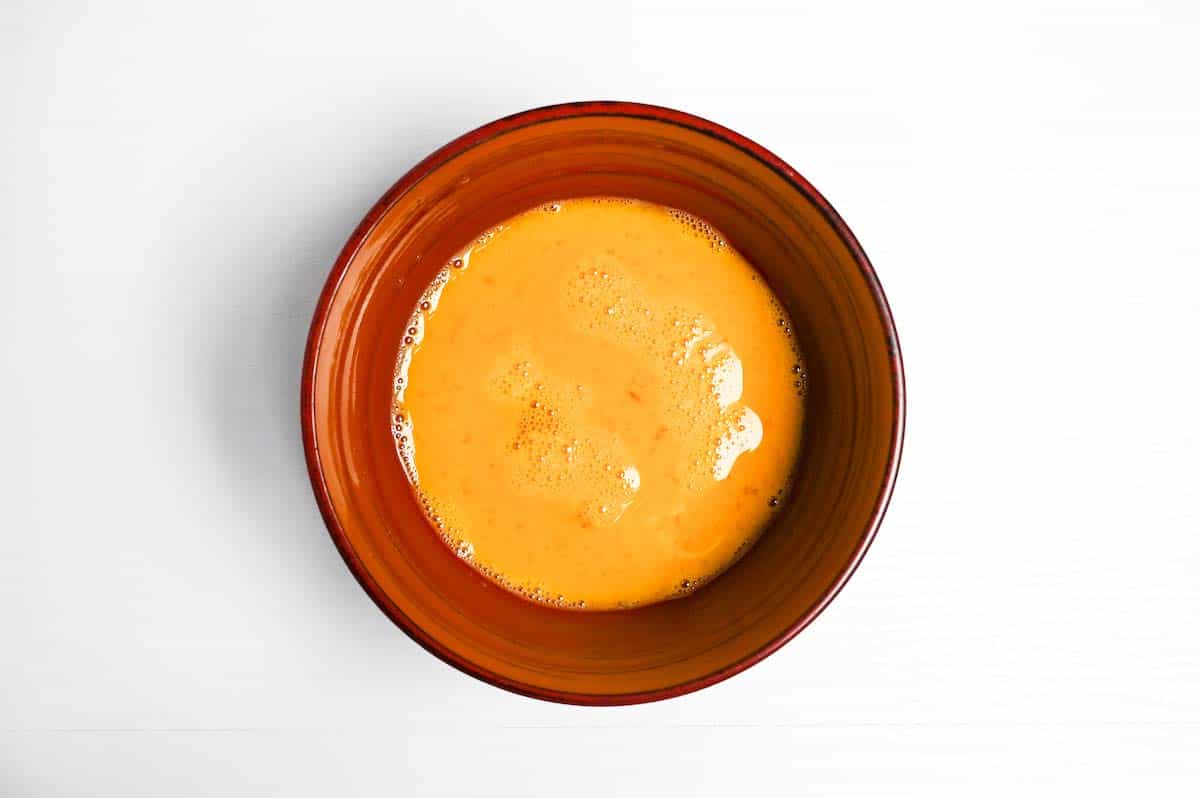
If you prefer a thinner porridge consistency, you can wash the cooked rice in a sieve before adding it to the broth. Be sure to shake it thoroughly to remove the excess water.

Once the dashi is boiling, add the cooked rice.
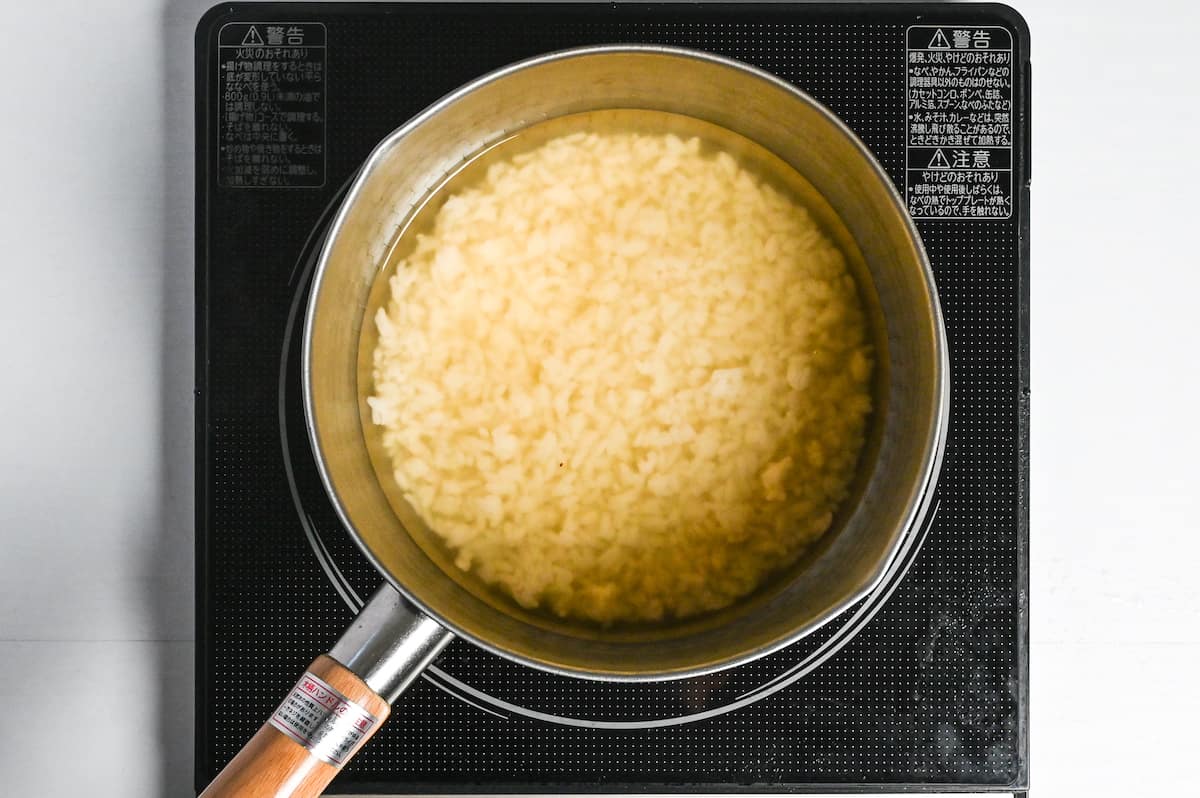
Next, add the sake, mirin, and light soy sauce and mix.
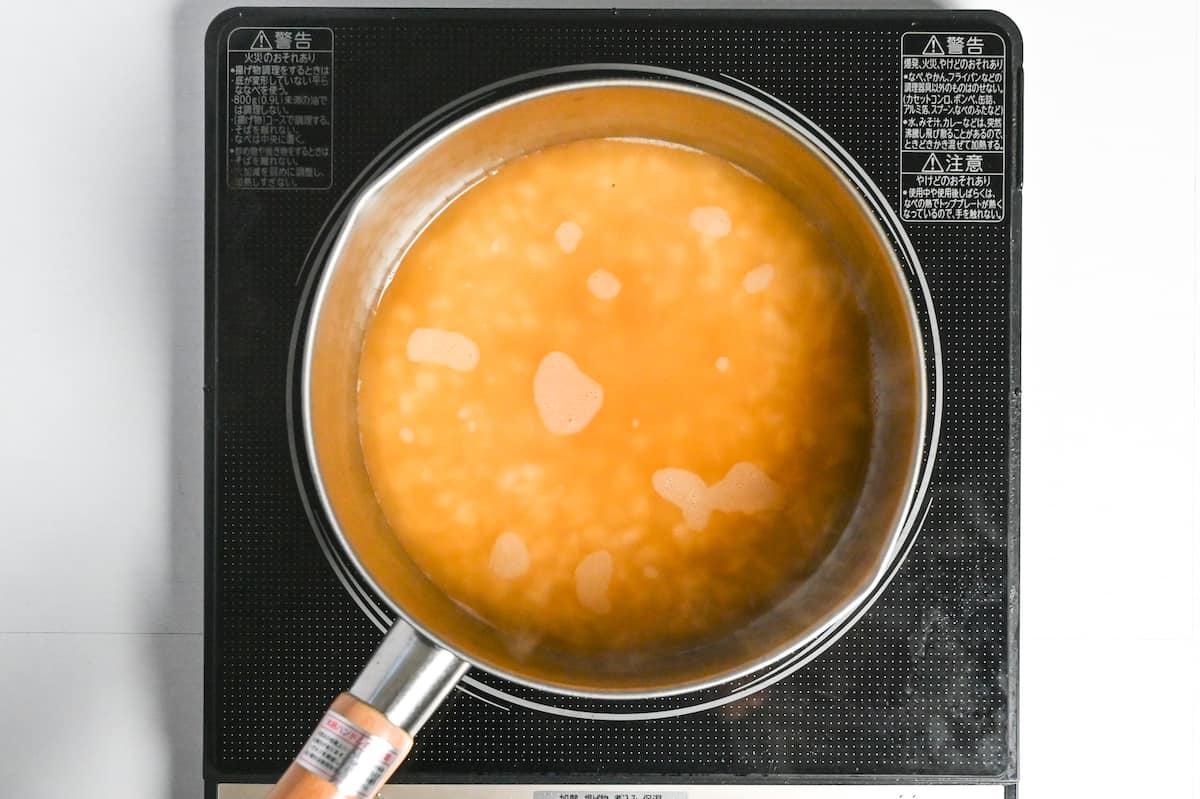
Lower the heat to a simmer and place a lid on the pot slightly ajar to allow the liquid to reduce a little. Check frequently to access the consistency, the longer you cook it the thicker it will become.
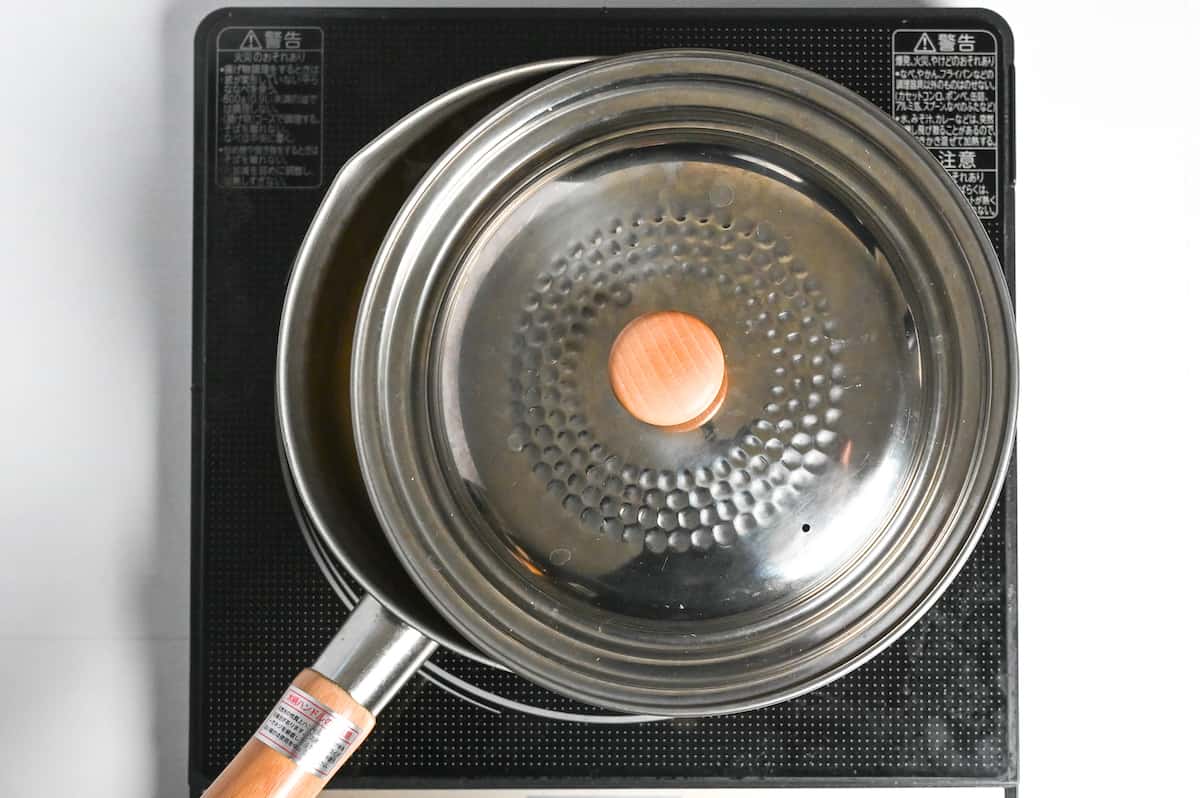
Once the okayu reaches your desired consistency, pour the whisked egg into the pot and don’t touch it for 20-30 seconds.
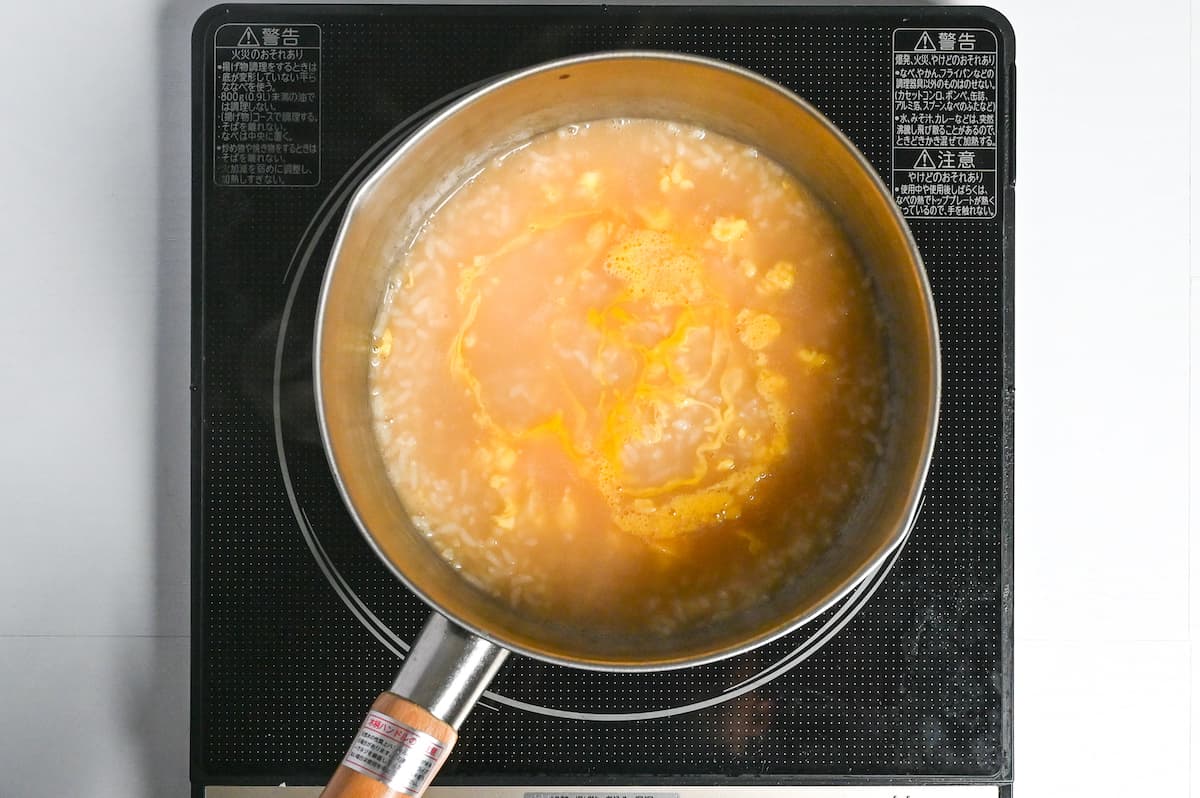
After 20-30 seconds have passed, mix the egg to break it up and evenly distribute it throughout the rice.
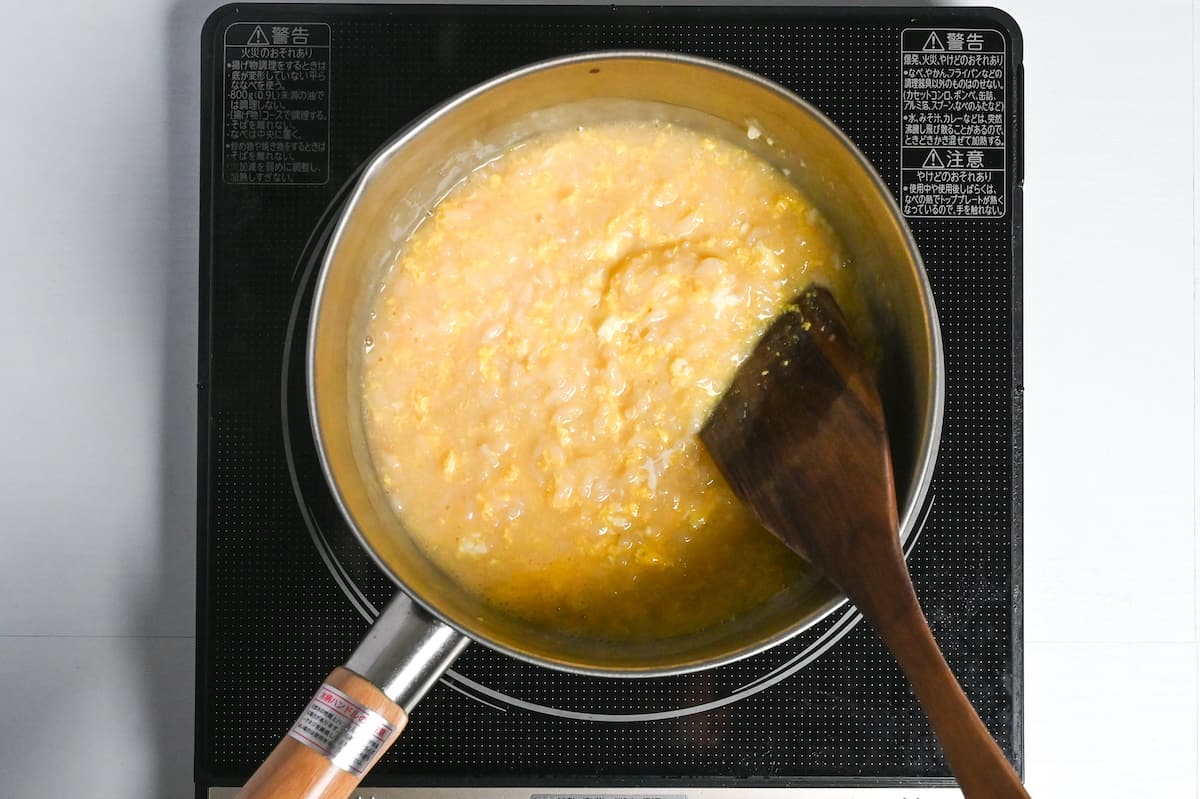
Transfer to a bowl and top with a drizzle of sesame oil, a sprinkle of chopped spring onion and kizami nori (or toppings of your choice).
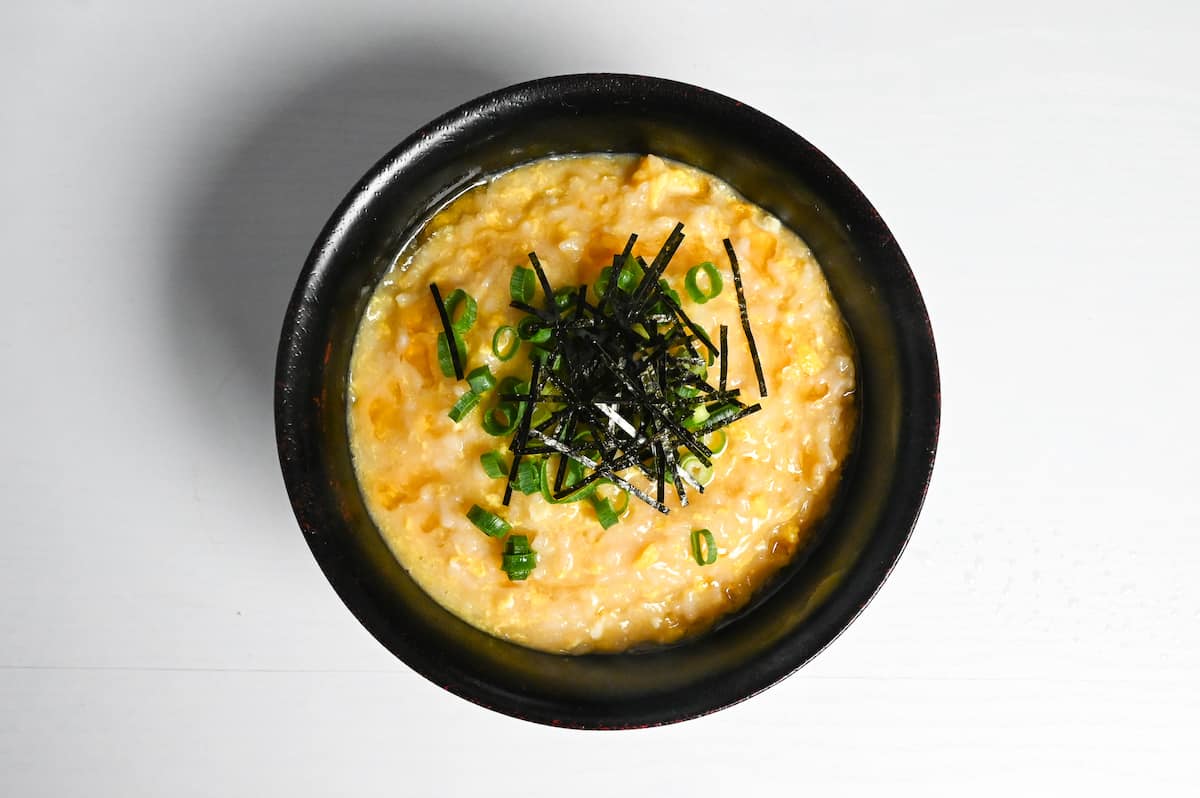
Enjoy!
Jump to Full Recipe MeasurementsHow to Store
Leftover okayu can be stored in the fridge for up to 2 days, or 2-3 weeks in the freezer. To prevent bacterial growth, don’t save half-eaten okayu, only store untouched okayu that is still in the pot. It’s recommended to divide it into individual portions and store in airtight containers.
To reheat refrigerated okayu, simply heat it in a pot on the stove. Alternatively, you can warm it in the microwave. Mix it every 30 seconds to 1 minute to ensure even heating.
To defrost frozen okayu, either thaw in the fridge overnight or place the container in a bowl of hot water (be careful not to let the hot water enter the container). You can also defrost in the microwave by removing the lid, adding about 1 tsp of water and covering with plastic wrap. Microwave for about 2-3 minutes at 500-600W and mix every 30 seconds to 1 minute.
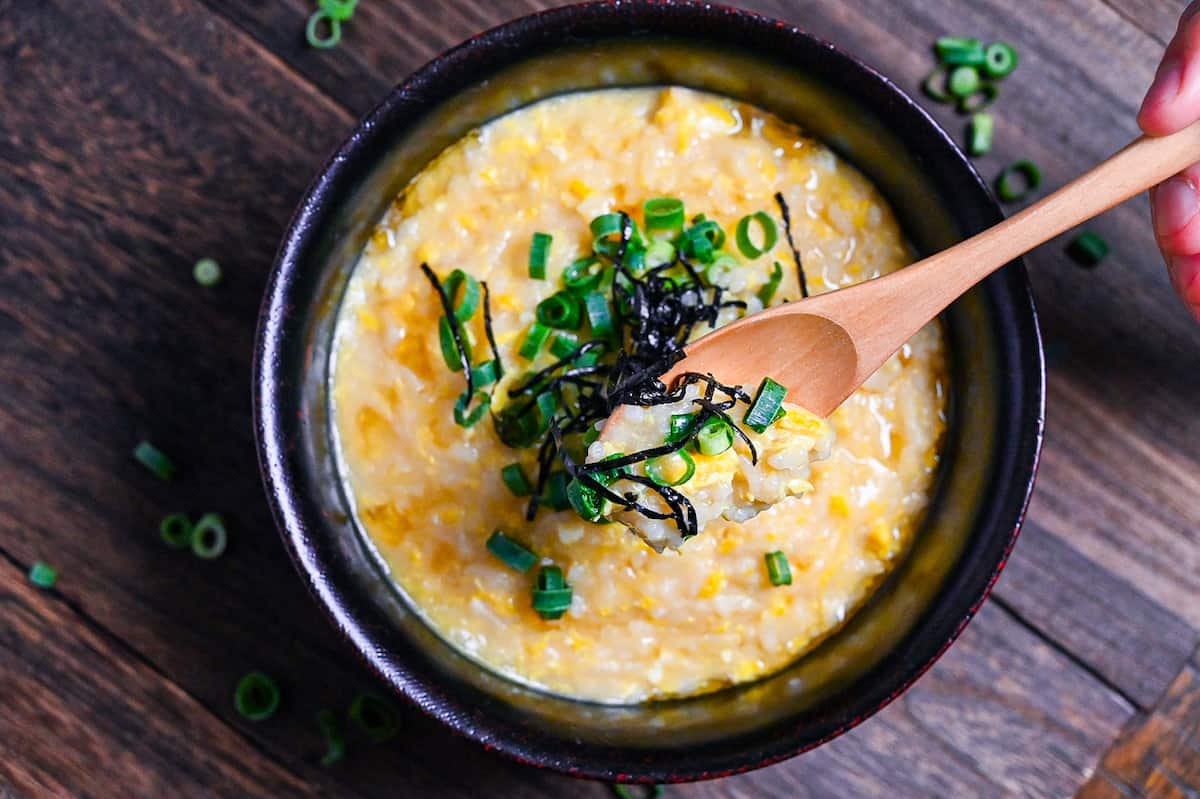
I hope you enjoy this Easy Egg Okayu recipe! If you try it out, I’d really appreciate it if you could spare a moment to let me know what you thought by giving a review and star rating in the comments below. It’s also helpful to share any adjustments you made to the recipe with our other readers. Thank you!
More Japanese Rice Recipes
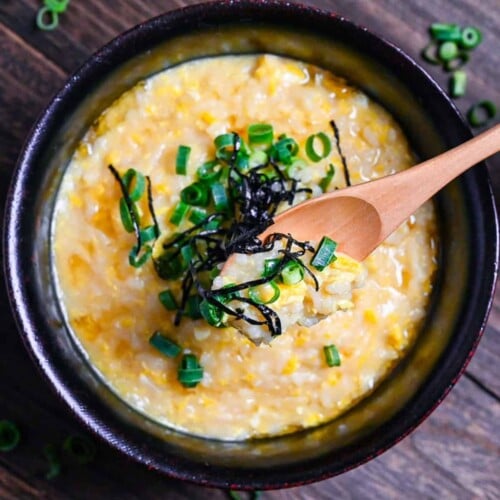
Easy Okayu with Egg (Japanese Rice Porridge)
Equipment
- Zojirushi Rice Cooker (optional)
Ingredients
- 200 g cooked Japanese short-grain rice
- 2 egg medium size
- 400 ml dashi stock use shiitake and kombu dashi for plant based diets
- 1 tsp sake
- 1 tsp mirin
- 1 tbsp Japanese light soy sauce (usukuchi shoyu)
- 1 tbsp finely chopped green onions
- 1 drizzle toasted sesame oil optional
- 2 tbsp kizami nori (shredded nori) optional
My recommended brands of ingredients and seasonings can be found in my Japanese pantry guide.
Can’t find certain Japanese ingredients? See my substitution guide here.
Instructions
- Pour 400 ml dashi stock into a pot and bring to a boil over a medium heat.

- While you wait for the dashi to boil, whisk 2 egg in a small bowl until the yolk and whites are combined.

- Optional: If you prefer your porridge with a thinner consistency, wash the cooked rice in a sieve and shake thoroughly to remove excess water.

- Once the dashi is boiling, add 200 g cooked Japanese short-grain rice, 1 tsp sake, 1 tsp mirin and 1 tbsp Japanese light soy sauce (usukuchi shoyu).

- Turn heat down to simmer and continue to heat with a lid set slightly ajar. Check the consistency frequently.

- Once it reaches your desired consistency, pour the whisked egg into the pot and and cook for 20-30 seconds without mixing.

- After 20-30 seconds, mix thoroughly to break up the egg and evenly distribute it through the rice. Remove from the heat and divide into serving bowls.

- Serve with 1 drizzle toasted sesame oil and 1 tbsp finely chopped green onions or 2 tbsp kizami nori (shredded nori) (or toppings of your choice).

- Enjoy!
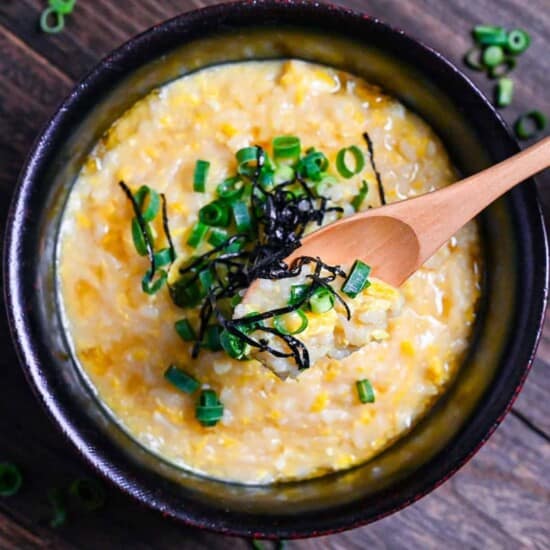



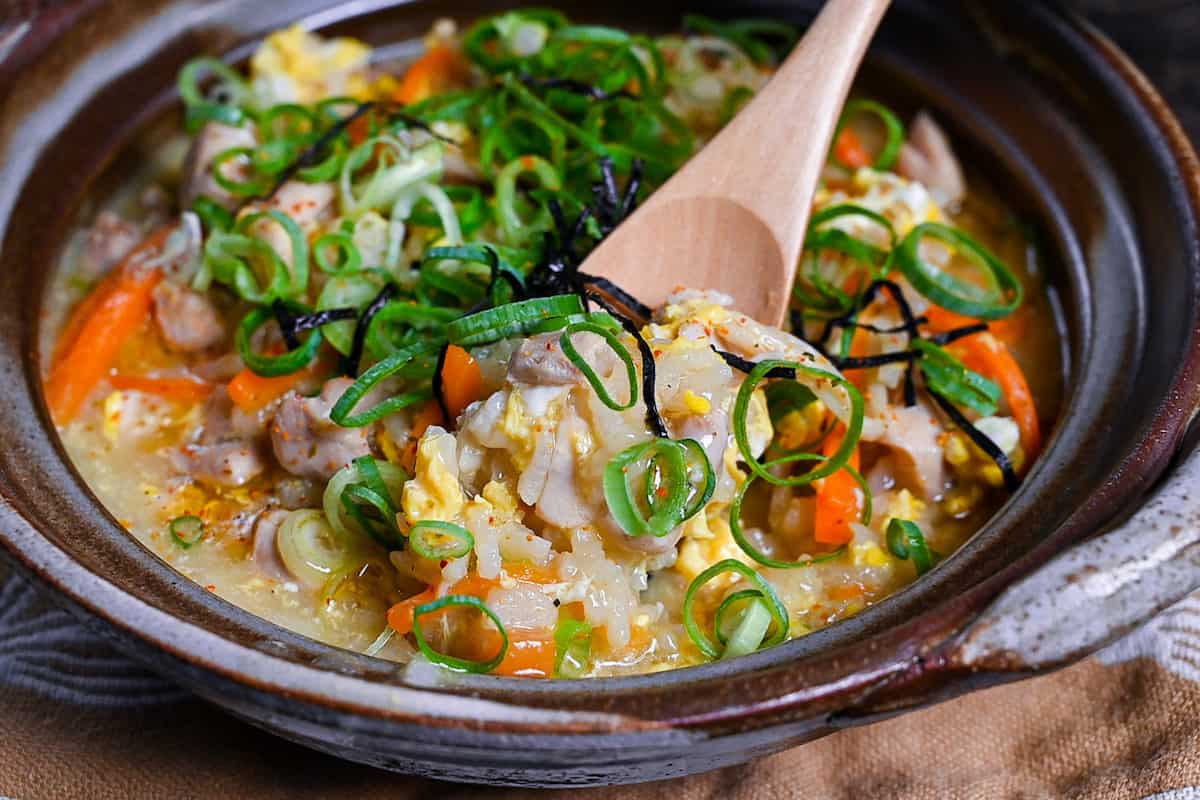

This is my new souldfood!!! I’ve never tried rice porridge before, now I wonder what took me so long..?! Super easy and most delicious ありがとう❤️
Hi Dee,
Thank you for the comment! I’m glad to hear that you enjoyed the recipe!
こちらこそ、ありがとうございます!
Yuto
Made it this morning, turned out great. Thanks!
Hi Jenevieve,
Thank you for your comment and sharing your picture! Looking good! I’m glad to hear you enjoyed it!
Yuto
sick with the flu I made it to myself, and truly it is a comfort food both to body and soul.
thank you!
Hi Hadas,
Thank you for making this recipe! I hope you’ll feel better soon! 🙂
Yuto
I have enjoyed and made okayu quite a bit, but I usually use a 5:1 ratio for water:rice. What are your thought on this larger amount of water?
Hi Josiah,
Thank you for your comment! The water ratio and cooking time really come down to personal taste. I tend to go lighter on water because I enjoy more grain texture, but traditionally, okayu is definitely softer and more soupy, so larger amount of liquid is absolutely in line with that style! 🙂
Yuto
This is so delicious, thank you
Thank you so much, Amanda!